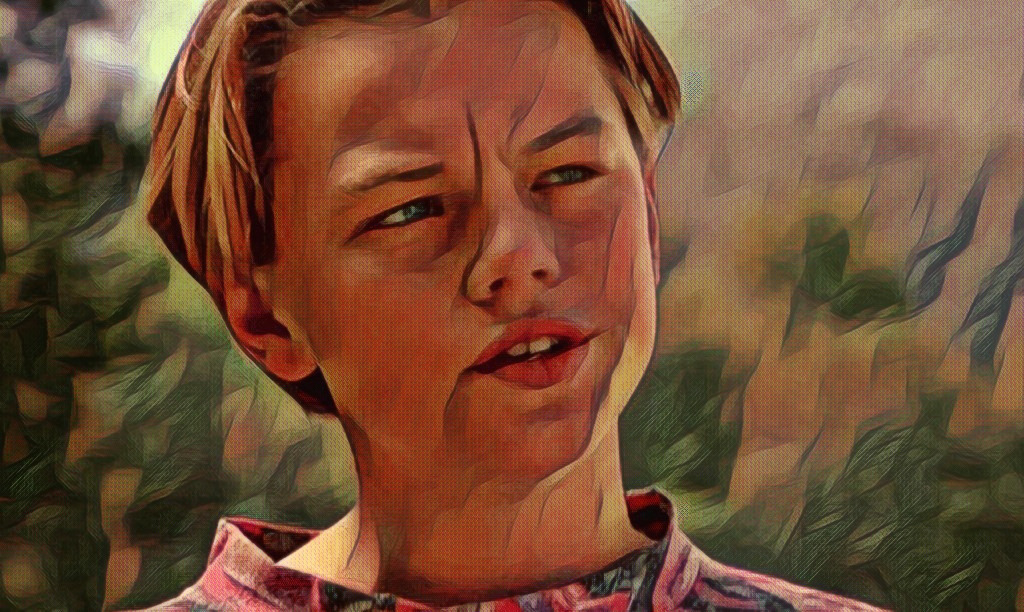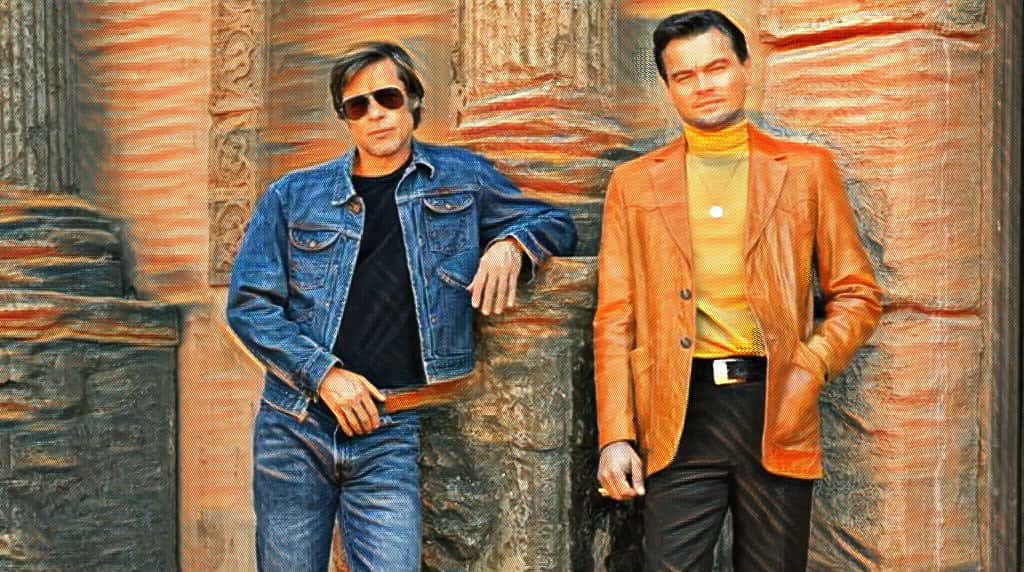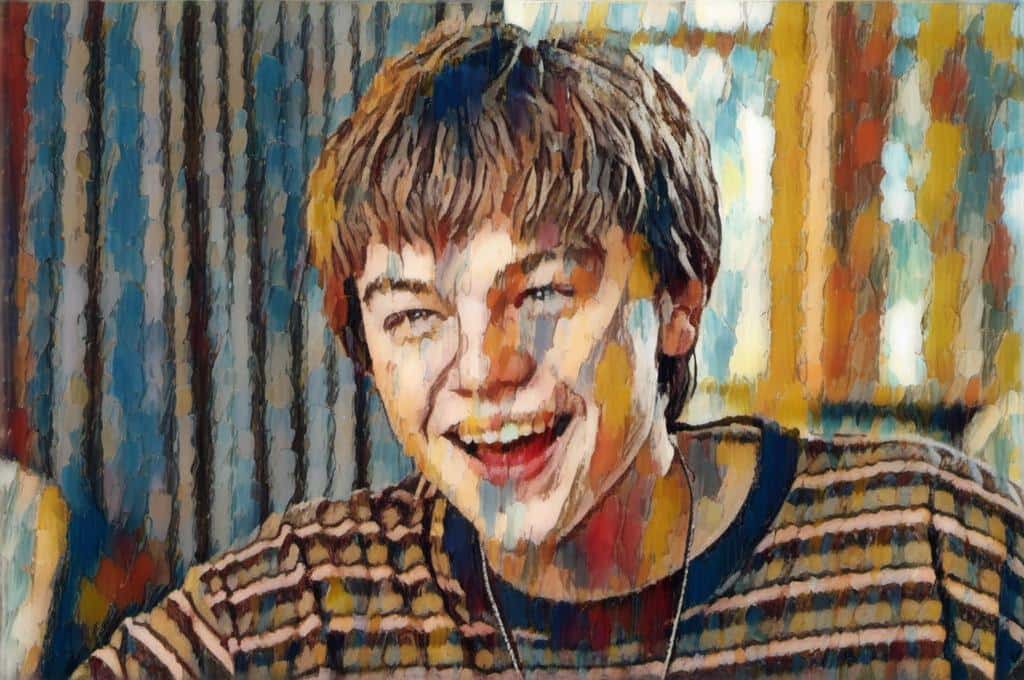
Prologue
Imagine this: you’re cruising through your feed when—one again, of course—there he is once again, another pap photo of Leonardo DiCaprio exiting yet another relationship faster than Jack hopped off the side of the ship in Titanic. Why is this man always so predictably unreliable as Hollywood’s leading star?
Hello to Leonardo Wilhelm DiCaprio: the Yank actor with an Italian father who has turned leaving girlfriends on their 25th birthday into a piece of higher art than his Oscar-winning performance in The Revenant. This is a man who can convince all to believe that he is about to expire from exposure in a forest that is teeming with bears, but somehow can’t calculate how calendars function in relationship terms. It is seeing an individual perform Shakespeare but become confused about a McDonald’s menu.
Born in 1974 in Los Angeles—in short, where would future Hollywood royalty ever be born?—DiCaprio has taken thirty years to perfect the art of being loved and mysterious. A TV star and commercial boy during Growing Pains, he was even then foreshadowing young promise of commitment issues even to TV shows.
And also 1997’s Titanic—the film that sent him to pretty boy stardom and riches-as-fat-as-a-small-nation’s-GDP fortune. But here’s where it gets interesting: once he was crowned world’s heartthrob, he became crazy—he became picky. He began dishing out romantic lead rejections quicker than he dishes out rejections for women over 25.
Take a bow, then, Martin Scorsese, whose career was DiCaprio’s professional lifeline and possibly only long-lastingly successful partnership. Five films together—Gangs of New York, The Aviator, The Departed, Shutter Island, and The Wolf of Wall Street—more than all his relationships counted up in sum.
He chased an Oscar for nearly two decades like some sort of nut, wrestling grizzly bears, leaping headfirst into fantasies, and enduring all kinds of on-screen torture until he finally won in 2016. The internet ridiculed his quest before memes were even cool.
And then there’s the tasty irony: DiCaprio is an eco-activist, a UN Messenger of Peace who has exhorted leaders to get their acts in line when it comes to global warming. Here he is, photo’d frequently speeding around on gas-sucking yachts with supermodels who’ve flown in from far-flung continents. It’s the rhetorical equivalent of opening a veggie steakhouse—the cognitive dissonance would be strong enough to power a wind turbine.
His formula for courting mathematically became formulaic enough that bookies likely bet on it. The man courts relationships like he’s purchasing a subscription deal that has a ridiculously short shelf life. Not to mention paparazzi shots batting an eye to remind him he’s merely a regular human person—and that’s why we get nose-picking photos that went viral quicker than any movie trailer would. This is a man who earns $20 million per picture who’s forgotten that cameras were everywhere in 2024.
Recent works with Tarantino (Once Upon a Time in Hollywood), Adam McKay (Don’t Look Up), and another one with Scorsese (Killers of the Flower Moon) promise us that his works are a more perfect union than any. His trophy room Sparkles with an Oscar, Golden Globes, and hundreds of awards, and films have made nearly 7.2 billion back through the global box office.
So what do we know about Leonardo DiCaprio? He’s an eco-warrior dedicating his life to saving the planet for the rest of us. A true thespian caught doing less-than-true things in public. A nearly-50-year-old lad who’s still out enjoying dates.
But isn’t that gloriously, maddeningly human? DiCaprio acts the contradictions that we all struggle with, simply on an amplified scale because of money and fame. He’s good enough that we forgive him faults for two hours, wealthy enough to do what he pleases, and famous enough that we can’t help but stare.
Whether you adore his performances, hate his decisions, or just appreciate the television show that his personal life offers, one thing is certain: DiCaprio has managed to remain current in a business that seems to consume work more readily than he consumes girlfriends.
And is it not that, then, the final performance of all?
From Renaissance Namesake to Fake Eco Warrior
Nov 11, 1974: Leonardo DiCaprio was born when his mother was gazing upon a Leonardo da Vinci painting in Florence. Coincidence? Or was destiny just chuckling about Hollywood’s ultimate virtue-signaling yacht bro?
And this is the irony: our future environmental champion was christened after Renaissance icons Leonardo da Vinci during a family excursion to an Italian museum. Fifty years down the line, Leo consumes enough fuel in his super-yachts to light a small nation. But, of course, he gives first-class environmental talks during high-seas champagne bashes, isn’t he?
Bohemian Origin that Gave Birth to Hollywood’s Biggest Hypocrite
George DiCaprio—heark, underground comix cartoonist, all right, with an ‘x’ because groovy enough was not standard spelling, and German legal secretary—Irmelin gave birth to something unique: a son who’d be aIRT at being a master of anything and professing something else. George skipped out when Leo was just about one due to another female. But that’s where it gets fascinating: just as much against acrimonious divorce soap opera, he and his German legal secretary wife engendered the first mixed family arrangement. Two households, yard in Echo Park, and a young boy who learned early that rules were for creative reinterpretation.
Imagine young Leonardo slicing through this unusual setup. Two houses, two parents, and no conventional boundaries. The ideal proving ground for the man who’d much later preach to all about carbon footprints and be zooming around the world from private island to private island.
Echo Park: Where Future Oscar Winners Learn Street Smarts
This was not movie-land childhood. ’80s Echo Park was a tough neighborhood—prostitutes, crime, and violence darkening the neighborhood darker even than any DiCaprio film. Young Leo went to Catholic Masses but was exposed to the rougher side of human nature outside church doors.
School would be only another step he’d be leaving behind. Los Angeles Center for Enriched Studies, Seeds Elementary, John Marshall High School—all schools only another stepping stone to fame. Why study from textbooks when you can study from scripts?
A Method Actor (and Future Environmental Hypocrite) in the Making
Imagine this: an 11-year-old Leo as a runner-up in a breakdancing contest being organized in Germany. The same child who’d just burst out dancing on stage in performance festivals, winning hearts with sheer unadulterated charisma. He even got performance—inasmuch as he didn’t get performance art, which is to perform what you practice.
He would be “Lenny Williams.” Lenny Williams! As if Mother Nature ever needed generic Hollywood monyms for Leonardo DiCaprio. He refused, retaining the surname that connected him to creative genius. Masterstroke—”Lenny Williams” doesn’t have quite the same ring to environmental fame in superyachts.
One Hundred Rejects and the Making of a Star
This is where the Leo narrative is just not plausible: 100 auditions in eighteen months. 100 rejection letters. Picture the dialogue. His underground comix dad telling him to keep at it as casting directors issued “thanks, but no thanks” ninety-nine times.
And then the breakthrough—not sudden, no earth-shattering epiphany, but ads for Matchbox cars and ads for Kraft Singles. Every garish commercial was another step lower down rejection river, which brought him that much nearer success shore.
The Early ’90s: The TV Training Ground
“The Outsiders,” “Santa Barbara,” “Parenthood”–Leo observed Joaquin Phoenix’s performance like a graduate student, unpacking each movement. Brilliant performance, he was acutely aware, was about transformation, not replication. This sort of intensity would come in handy later when he shifted from dramatic leading man to environmentalist who casts all inhibitions regarding ethics during off time.
The Irony Legacy And that’s how you get a boy named after a Renaissance giant, born in an Italian period of enthusiasm towards art, who survived Expressionist Echo Park neighborhoods, and resisted Hollywood temptation to gain a new name. He gained a foothold in an industry that continued to reject him. That same drive that drove him through 100 auditions that propels his double life today as eco-warrior and yachtsman billionaire is, as if, it’s poetic—that in Leonardo’s artistic side, he produces timelessness artworks, and that Leonardo’s cinematic side produces timelessness paradoxes. But who hasn’t lectured about being Greenie-clean but privately relished in luxuries to the contrary of what we preached on the street? At least when Leo does this, he does it with Oscar-worthy conviction and million-dollar production values. The real question isn’t that he was successful, but that he was successful without it seeming that he learned how to have his organic cake and eat it, too, and experience foreign waters via a fuel-burning ship that uses during a weekend fuel that all of us use during twelve months. That is a work of art now.

How Rock Bottom Launched Hollywood’s Biggest Comeback Story
Leonardo DiCaprio: a gaunt, disheveled teenager, on his very first film set. What does he have in store for him? Not Oscar glory—but a stint in Critters 3, a movie that’s numbingly awful even DiCaprio would call “perhaps one of the worst movies of all time.”
Discuss starting from rock bottom. Rock bottom, however, does have decent Wi-Fi to support your rags-to-riches tale.
From Horror Show to Growing Pains
It was 1991, and our future Titan stud was acting just as he characterized “your average, no-depth, standard kid with blond hair.” Harsh realities? Yes. Career killer? Not necessarily.
He was cast in a recurring role on Growing Pains as street kid Luke Brower. To this point, you’d just about presume that this all seems like standard clean TV fare, yes? Not on your life. DiCaprio brought this role an evil glint that costar Joanna Kerns would describe him as “particularly bright and boyishly charming for his age.”
Here’s the thing: his looks were meant to draw ratings from young women. And instead, he was a kid who, in between shots, would be mocking his co-stars. Classic DiCaprio—one already not wanting to play Hollywood’s rules.
De Niro Moment that Changed Everything
Fast forward to 1992. Picture this: 400 desperate young actors, no doubt perfecting their “Serius Actor” face in bathroom mirrors, fighting over a single role. In walks Robert De Niro, who hand picks. Leonardo DiCaprio.
What did De Niro notice that 399 other casting directors did not? Raw talent hidden behind teenage angst.
It was This Boy’s Life, out of Tobias Wolff’s memoir. DiCaprio was Toby, a youth caught between his mother (Ellen Barkin) and his cruel stepfather, played by De Niro himself. Now the twist here—director Michael Caton-Jones was not pleased with DiCaprio’s on-set attitude initially. The young actor just didn’t know how to be professional.
Rather than release him, Caton-Jones resorted to tough mentoring. More often than not, you learn nothing from success as much as you do from someone who is concerned enough to help you be better.
To what effect? Electric. Screenwriters raved about high-octane Barkin and DiCaprio chemistry, which he observed in awed detail as he shifted from sulky teenage eyes to self-assured young eyes. Not acting – an arrival of talent.
What’s Eating Gilbert Grape: The Performance that Created a Star
If This Boy’s Life heralded the arrival of DiCaprio, then What’s Eating Gilbert Grape in 1993 solidified his phenomenal abilities firmly. Even director Lasse Hallström himself was in two minds initially—he had believed DiCaprio was too traditionally handsome to play Arnie, Johnny Depp’s mentally impaired brother.
Something unexpected happened at the auditions: DiCaprio proved to be “the most perceptive” of the applicants, displaying an intuitive sensibility that went beyond looks.
What DiCaprio went on to do marks out leading actors from average actors. He didn’t simply study his script and arrive on set. He researched children with this same kind of developmental condition, observing their mannerisms, their individual way of navigating their world. Hallström, who was impressed that he’d done this research, gave DiCaprio total creative control to develop the character.
He was that good that New York Times critic Janet Maslin wrote that he was “at first difficult to watch”—the best praise you can give an performance that crackles with electricity.
From Zero to Oscar Nominee in Two Years
At 19, he was an Oscar nominee, a Globe nominee, just the seventh youngest ever nominee for Best Supporting Actor. Put that career trajectory in your mind: from Critters 3 to Oscar nominee in a two year time period. That’s not career growth—that’s a meteoric rise that heralded that we were seeing something truly special being created. DiCaprio had found something fundamental about his work: something about reinvention whole-cloth, about becoming so thoroughly embedded in a character that you forget, even as you gaze, that you’re looking at Leonardo DiCaprio, full stop. And the best part? He had only just started. Who would have imagined that the star of the worst movie ever made would end up as one of the most famous actors in Hollywood? Sometimes the greatest stories begin with the worst of beginnings.

DiCaprio Nearly Declined the Role That Made Him a Global Icon
Young Leonardo DiCaprio was at professional crossroads, far from Hollyweud: play the sleazy role in Paul Thomas Anderson’s Boogie Nights or ride aboard James Cameron’s “unsinkable” vessel. We all know which iceberg he ran into, but pay attention to this tasty irony—”DiCaprio nearly skipped Titanic.”
Imagine? The same episode that would transform him from TV teen to international sex symbol practically overlooked him because Leo was terrified. As in didn’t-win-the-lottery because you wouldn’t have any idea what winning was. Thankfully, James Cameron—a man who would likely get real-world Titanic passengers back on ship—talked our self-conscious leading man off the diving board.
Most Costly Risk in Hollywood History
Costing over $200 million in 1997, Titanic was film’s costliest wager. Cameron actually constructed a duplicate ship in Rosarito, Mexico, because no amount of CGI would be enough to realize his megalomaniacal dreams. The man needed to sink a ship, and he was going to sink one regardless if it was real or fake, even if that meant constructing an artificial ship somewhere off the coast of Mexico.
To everyone’s shock, Titanic didn’t just scratch box office records, it crashed through them like an iceberg through a steel ship. It raked in more than $2.1 billion at international box offices, making DiCaprio no longer a young leading man, but a certified world sensation, an infatuation all his own: “Leo-mania.”
When Teen Idol Status Is A Prison
Leo-mania was not fan worship—it was cultural madness. Picture Beatlemania, only instead of four Liverpudlian chaps, teenage girls all over the world went giddy over one blonde American from California who appeared to have stepped straight out of a Renaissance painting. When an Oscar snub mocked DiCaprio’s acting, more than 200 fans staged protests against the Academy of Motion Picture Arts and Sciences.
You put your feet on the pavement. For an Oscar nomination. For a dead-on-a-sinking-ship kind of character.
The movie stole the Oscars, winning eleven, including Best Picture. But there he was, DiCaprio, while all the others got beaming statues and he, their love beat, none. He got a Golden Globe nod, of course, but after having been a part of making cinema’s greatest apocalypse romance love affair, didn’t this slight sting?
A Crisis of Overwhelmingly Too Much Success
Three years later, DiCaprio talked about having gone through existential horror characteristic of intellectuals: “I have no connection to me through that entire Titanic experience and what my face was to everybody out in the world. I’ll never experience that amount of fame again, and I do not see that.”
There is something merely heartbreaking about an actor being so linked to portraying a man who dies that he loses track of who he is. DiCaprio got stuck in the collective consciousness as being nothing more than the sweetheart good enough to leave women breathless with presence alone.
His critics spun magic that he instilled in Jack Dawson. Peter Travers, in Rolling Stone, called it DiCaprio’s “best performance yet,” citing how he and Winslet “bring their straight-from-the-heart back-and-forth dialogue so much genuine emotion that you can’t help but be swept up in their star-crossed lovers’ affair.” Vanity Fair declared them “Hollywood’s most iconic screen couple” since Bogart-Bergman.
The Cost of Cinematic Immortality Yet Hollywood’s nasty twist was this: Titanic’s massive success would likely make DiCaprio a pretty boy for period romances. The fervor that had elevated Leo-mania to its current status as a teenage heartthrob would stick to him like pesky paparazzi. Noticing that creative fault, DiCaprio deliberately held back, committing “to learn to hear [his] own voice in choosing the roles he’d like to play.” The film that catapulted him as one of the world’s leading actors similarly compelled him to slam on the brakes and redesign his complete career trajectory. Titanic didn’t only sink on screen—it almost pulled DiCaprio’s career as an artist down with its own tidal wave of success. Biggest wins occasionally equal smartest withdrawals.

When DiCaprio Met Scorsese: A 2000s Love Story in 5 Films
The Great Lightsaber Dodge: Leo Averted the Dark Side
Assume this intergalactic farce: A still-“kissing of the world”-elation Leonardo DiCaprio has a phone call from George Lucas. “You want to be Anakin Skywalker?” A probable answer from Leo was something like a formal version of “eat glass first.”
Was this God’s work? Had Leo somehow looked through some sort of time portal and seen Hayden Christensen give the timeless “I don’t like sand” speech with about the same dramatic flair as that clump of driftwood? Was there any chance that his repressed psychic powers came of age at this instant, visions flashing before his eyes of himself complaining about coarse, nasty, obnoxious sand and being groomed by an especially bad-day Wookiee?
Year of Redemption: Crisis Turned to Gold
Fast forward to 2002, when DiCaprio transformed from pretty boy to unchallenged acting talent in “Catch Me If You Can.” Leo played Frank Abagnale Jr., a true-life con man who swindled millions before he was old enough, technically, to have a beer. While all teens were begrudging their way through algebra, Frank was creating Pan Am pilot certificates and depositing phony checks like it was nothing.
Spielberg’s shoot was a blur—147 locations, 52 days, practically three locations per day—”the ultimate adventurer’s film-making experience.” “The most adventurous, super-charged movie-making” he’d ever seen, was how its star, Chris Wedge, described it, in Hollywood lingo “controlled chaos that somehow worked.”
The payoff? A $355 million box office phenomenon on a budget of $52 million. Roger Ebert lauded Leo with praise for shedding his pretty boy images, and Entertainment Weekly critics deemed it his 2018 standout performance, challenging someone to “find a better performance, if you can.” Strong words, but possibly true—it’s larger than Titanic’s iceberg.
Gangs, Budgets, and Beautiful Disasters
And that’s not even all that happened! In 2002, also, DiCaprio jumped headlong into Scorsese’s “Gangs of New York” as a man considering jumping headlong into a rabid wolf den. Observe how Hollywood math is fun: Scorsese had, for years, attempted to secure his pet project, only to be rebuffed with more no’s than would be desired from a telemarketer. Along comes DiCaprio, however, and lo! Miramax shows up with checkbooks in hand.
Isn’t it amazing how the thrill of one A-list can make “absolutely not” “here’s a blank check”? It’s like watching one human being turn water into wine, except the wine costs $103 million and comes with a requirement for elaborate period dress.
Production was an on-camera disaster waiting to be taped. It was in grotesquely overscale budget like a whirlybird sans rotor, producer-director conflicts that likely registered on seismographs, and an eight-month shooting schedule longer even than its actual-world Civil War draft riots. DiCaprio was drawn to Amsterdam Vallon because it was his first “wow, he can really act” film since “oh, isn’t he precious” gigs.
Genesis of a Business Empire
By 2004, itinerant entrepreneur DiCaprio had emerged from an extremely pricey cocoon like a butterfly. He started Appian Way Productions, along an ancient Roman route because, somehow, Leo is an even bigger zealot about ancient infrastructure than most individuals are about pizza.
His raison d’etre was sheer survivability: far too many creative endeavours were killed off by committee, death from a thousand managerial “improvements.” Been in the room when an excellent script was ravaged by an excessive number of chefs? Watch somebody “improve” the Mona Lisa with crayon.
The Aviator: Defining Grand Madness
His true glory, however, was in “The Aviator,” where DiCaprio didn’t just play Howard Hughes—he became an obsessive-compulsive flight pioneer losing his marbles incrementally but inexorably constructing flight devices. Acting an obsessive-compulsive flight pioneer wasn’t acting per se, but method acting with a Ph.D. in psychology.
The movie made $213 million on a $110 million budget, and critics finally ceased viewing Leo as a handsome face who happened to find himself on movie sets. The Golden Globe gods finally forgave him, no doubt thinking, “Okay, okay, the kid really is a pretty great actor. Here’s your statuette.”
The Double Feature Craze
And then 2006 arrived—the year DiCaprio proved he could play two powerhouse roles like a shot-of-espresso acrobat. “The Departed” was able to cast him as Billy Costigan, living in subterranean survival mode in an Irish Mob “constant 24-hour panic attack.” He didn’t rehearse this role sitting in front of Google typing “Boston Irish Mob”—he went to Boston, spent time around the people in the underground, and put on 15 pounds of muscle. That’s commitment that makes us method actors everywhere cry tears of envy.
But this is where Hollywood politics gets stranger than a Kafka novel: although he was in “The Departed,” Warner Bros. submitted his performance for Best Supporting Actor solely not to compete against his own leading performance in “Blood Diamond.” Why? Well, naturally, Leo was that great that year, he was basically competing against himself. As in being that quick you lap yourself in a race.
Blood, Diamonds, and Unmanageable Accents
“BLOOD DIAMOND” cast DiCaprio in a role of a smuggling trafficker that existed during Sierra Leone’s civil war. His training was harder than Navy SEAL school—a six-month residency inAfrica, camouflage school, taught by real military, and learning one of DiCaprio’s most challenging accents. Try adopting a Rhodesian accent. Most actors would botch even straightforward British or Southern American accents, and Leo thought he’d experiment with something that probably only twelve people worldwide would be able to verify its authenticity.
Revolutionary Romance and Career Balancing By 2008, DiCaprio was gliding effortlessly between production responsibilities and A-line credits like a seasoned hand on steroids. His co-performance with Kate Winslet in “Revolutionary Road” was cinematic poetry, period—he acting out a 1950s couple whose union was falling apart faster than an aging cookie. DiCaprio considered his work “unheroic” and “slightly cowardly”—a guy who would let conditions completely dictate him. Peter Travers praised their reunion, GQ called it “the most mature and memorable performance of his lifetime.” From doodling nude French women on the Titanic dude, that’s impressive growth. The Moral of This Hollywood Fable Zero to lightsabers to mastering impossible accents, zero to launching production studios to working with cinematic icons, DiCaprio’s 2000s is a career turnaround instructional guide in the style of an illness gag book. Could anyone dream that not being given an opportunity to grouse about sand from another universe would be the source of such gigantic accomplishments? The best you can do is say no, even that no would be disappointing for George Lucas and, quite possibly, for millions of Star Wars fans. But, you know, we did receive “Catch Me if You Can” instead of “Attack of the Clones” as well, so, who knows, maybe the Force was with Leo, too.

DiCaprio’s Masochistic Method: Blood, Nightmares, Oscar and Box Office
The Method Acting Masochist
Leonardo DiCaprio in the 2010s decided that being obscenely wealthy and critically acclaimed wasn’t masochistic enough. What did he do, then? He dove headlong into parts that quite literally gave him nightmares. Starting with 2010’s Shutter Island, Leo collaborated once more with Martin Scorsese for a psychological thriller that had audiences doubting reality—just like his character, the delusional U.S. Marshal Edward “Teddy” Daniels.
Here’s where things take a wild turn: DiCaprio became so invested in this deranged character that he had real nightmares about massacres. And his remedy? Socializing with friends was essentially therapy. Imagine having to explain that to your shrink: “So, doc, I spent my waking hours acting like I was crazy, so now Netflix and chill is my therapy.”
Critics were split on the twist ending, but audiences didn’t care. The film earned $294 million worldwide from an $80 million budget. Not bad for a movie that compelled its star to pursue friendship as psychiatric therapy.
The Dream Gambler
But Leo was not done flexing. Along came Christopher Nolan’s Inception—a movie so conceptually ambitious that it made viewers feel as though they needed PhDs in theoretical physics. DiCaprio starred as Dom Cobb, an “extractor” who breaks into dreams to pilfer secrets. Since obviously, normal burglary was not cinematically engaging enough.
This is where DiCaprio proved he’s not just a pretty face with good instincts. He took a massive gamble, cutting his usual $20 million salary and opting for first-dollar gross points instead. Translation? He bet on himself and the movie’s success, and he took a cut of every ticket sold.
The gamble paid off in a huge way. Inception made $836 million worldwide, and DiCaprio made a pretty $50 million—his largest payday to date. It’s like The Matrix had a philosophical baby with Ocean’s Eleven, and Leo was the godfather cashing in.
The Controversial History Lesson
Then 2011 came along with J. Edgar, in which DiCaprio portrayed FBI director J. Edgar Hoover for director Clint Eastwood. Critics were confused by the film overall, but they couldn’t help but rave about Leo’s subtle work. Roger Ebert praised DiCaprio for being able to get at elements of Hoover’s personality “possibly even unknown to the man himself.” That’s the sort of acting praise that will make other actors cry into their breakfast coffee.
Meanwhile, his production company Appian Way was churning out content. Unfortunately, not everything was gold—Red Riding Hood was named one of 2011’s worst ten films by Time magazine. Ouch. Even though it still earned modest box office returns, which just goes to prove that even critical flops have their fans.
The Bleeding Villain
Then came Django Unchained in 2012, for which Tarantino encouraged DiCaprio to unleash his inner beast as plantation owner Calvin Candie. Although initially apprehensive about the film’s unflinching portrayal of racism, Leo was encouraged by his co-stars and by Tarantino himself not to back down from unpleasant truth. The result? A performance Wired magazine described as “blood-chilling.”
But this is the iconic moment that defines DiCaprio’s dedication: during filming, he cut his hand on glass by mistake but persisted with the scene without dropping character. Tarantino, sensing cinematic gold, left the take in the finished film. That is not dedication—that’s borderline madness, and audiences ate it up.
Django grossed $425 million globally and earned Leo a Golden Globe nomination for Best Supporting Actor. Who knew method acting could be so literally bloody lucrative?
The Fake Environmental Break
In January 2013, DiCaprio said he’d be taking a break from acting to “fly around the world doing good for the environment.” Spoiler alert: his idea of “break” clearly meant producing and starring in two films that year. Classic Leo logic there.
The Great Gatsby saw him portraying F. Scott Fitzgerald’s ill-fated millionaire opposite Carey Mulligan and Tobey Maguire. Critics remained polarized, but DiCaprio’s performance was universally praised and earned the AACTA Award for Best Actor. Rafer Guzman of Newsday called DiCaprio “tough but also vulnerable, touching, funny, a faker, a human”—basically every adjective you’d want to have used to describe your performance.
Matt Zoller Seitz called it “maybe his career best” and “the movie’s finest and most effortless special effect.” The film grossed $353 million worldwide, more than tripling its budget. Not bad for someone who was allegedly on hiatus.
The Wall Street Wolf
Then DiCaprio teamed up with Scorsese for a fifth time for The Wolf of Wall Street. Portraying real-life stockbroker Jordan Belfort—whose memoir is like a textbook for financial excess—Leo had been fixated on the project after reading Belfort’s book. He engaged in a bidding war with Brad Pitt and Paramount Pictures for the rights. Since nothing screams dedication like outbidding Brad Pitt. The film showcased DiCaprio’s comedic abilities in what Jonathan Romney labeled “rubber-limbed slapstick” comedy. Todd McCarthy of The Hollywood Reporter praised Leo for a “free-spirited performance” that took the character to its ultimate potential. The film earned him the Golden Globe Award for Best Actor in a Musical or Comedy, as well as Oscar and BAFTA nominations.
The Ruling
By the end of this era, DiCaprio had accomplished something extraordinary: he could make people laugh, cry, doubt their sanity, and open their wallets—sometimes in the same movie. He went from teen heartthrob to Hollywood’s highest-paid star through sheer force of will, calculated risk-taking, and periodic self-inflicted injuries. Not bad for someone who swore he had to take a hiatus from acting. The man who gave himself nightmares for art had become the actor who made dreams box office gold.

Leonardo DiCaprio: Green Prophet or Just Really Good at Playing Pretend?
From Mega-Yachts to Melting Ice: Leo’s Contradictory Life
What do you get when you combine Hollywood’s biggest heartthrob with a melting iceberg? Leonardo DiCaprio—a man who has somehow succeeded in making the act of saving the world sexier than drawing naked Frenchwomen on doomed ships. Here is a man who could quite comfortably spend the rest of forever lounging on opulent mega-yachts, drinking champagne that’s more expensive than your mortgage, and yet he chooses to narrate documentaries about polar bears losing their homes. Is this genuine love for the planet or just the most complicated method acting known to man? Let us dive into the wonderfully conflicted world where Oscar gold meets environmentalism.
2014: The Year Leo Figured Netflix and Chill Was Not Cutting It
While the rest of us were perfecting the delicate art of binge-watching in our comfortable sweatpants, DiCaprio was busy executive producing “Virunga”—a documentary that follows the brave work of four people fighting to protect the world’s remaining mountain gorillas. For Leo, a relaxing Tuesday, it seems, involves intervening to prevent species extinction. The film premiered at Tribeca, and before you could say the words “environmental warrior,” our man had picked up a Primetime Emmy nomination. Not bad for a guy who once made us believe love could conquer all despite hypothermia and questionable boating plans.
But hold on—there’s more! That same year, DiCaprio was also involved in producing “Cowspiracy: The Sustainability Secret.” Before you roll your eyes at yet another celebrity preaching about quinoa, this documentary tackles a truly shocking truth: how your burger might be destroying the planet even faster than your gas-guzzling SUV. And Leo didn’t just sit back—he got involved in the Netflix version, because when you’re passionate about saving the planet, you go all in.
2015: How Far Will Leo Go for an Oscar? (Spoiler: Very Far)
Then came “The Revenant,” finally answering the age-old question: “What’s Leo’s pain threshold when Oscar gold is involved?” The answer? Eating raw bison liver and using animal carcasses as sleeping bags. While we complain about lukewarm coffee, Leo was out there mastering musket shooting, fire-building, and speaking Pawnee. It’s like Bear Grylls had a baby with method acting, and that baby really, really wanted an Academy Award.
Made for the cost of a small space program ($135 million), the movie grossed $533 million globally. DiCaprio’s acting was praised by critics with the fervor of finding free Wi-Fi. The movie ultimately won Leo his long-awaited Oscar, as well as BAFTA, Critics’ Choice, Golden Globe, and SAG awards. It just required almost freezing to death and sleeping inside dead creatures. Method acting: not for everyone.
Post-Oscar Liberation: When Winning Enables You to Be Yourself
Here’s where it gets intriguing. In the years immediately after winning Hollywood’s biggest prize, DiCaprio devoted himself to making environmental documentaries. In 2016 alone, he executive produced “The Ivory Game” and “Catching the Sun,” and produced, hosted, and narrated “Before the Flood.” Winning the Oscar apparently liberated him to full-on unleash his inner Al Gore—albeit with better hair and a lot more charisma.
Naturally, all was not plain sailing in Leo’s eco-warrior campaign. His production of “Live by Night” was met with reviews so tepid they made elevator music sound exciting, which couldn’t manage to return its $65 million investment. Even eco-warriors have bad days, it would seem.
The Tarantino Detour and the Ultimate Climate Wake-Up Call
Following the creation of “Ice on Fire” in 2019—since titling environmental documentaries evidently demands poetic irony—DiCaprio once again took on acting in Tarantino’s “Once Upon a Time in Hollywood.” The movie delves into the companionship between a fading TV star and his stunt double, with DiCaprio drawing upon real-life experiences of observing actor friends encounter career difficulties in the industry. Nothing quite screams authenticity like a mega-millionaire film star identifying with career insecurity, right?
DiCaprio’s most overt environmental message, however, arrived with 2021’s “Don’t Look Up.” Following five months of rewriting the script alongside director Adam McKay, Leo appeared as Jennifer Lawrence’s astronomer co-star attempting to alert the world to an extinction-level comet. The film is a genius metaphor for the collective shrug of society regarding climate change—a subject at the forefront of DiCaprio’s crusade.
From Titanic to Environmental Titan: A Celebrity’s Climate Journey
“Don’t Look Up” set Netflix records with 152 million hours viewed in a week, demonstrating that sometimes the most effective way to talk about imminent doom is with dark comedy and A-list stars. As DiCaprio said, he is always on the lookout for projects about the environment, and it is frustratingly hard because of people’s general unwillingness to hear inconvenient truths. So what do we do with Leonardo DiCaprio? Here’s a guy who could get by on good looks and charm alone, yet goes out of his way to utilize his platform as a planetary warning system. Whether he’s sleeping in animal carcasses for the sake of artistic integrity or producing documentaries on melting glaciers, Leo has somehow managed to make environmentalism as thrilling as any Hollywood blockbuster. And let’s be real, in a world where celebrities frequently use their power to sell us things we don’t need, having one who genuinely works to save the one we badly need isn’t a bad deal. Prophet or performance artist? It doesn’t perhaps matter, so long as the message gets through.
Recommended Articles
Bobby Milk to Robert De Niro: How a Pale Kid Conquered Hollywood
Brad Pitt Stop: Gorgeous Dude’s Wild Hollywood Journey
Greatest City My Ass: Where $5,000 Rent Gets You a Broom Closet
How a Scientology Loon Became Hollywood’s Richest Stunt Man
Mad Max to Manic Director: Mel Gibson’s Lethal Career Swings

